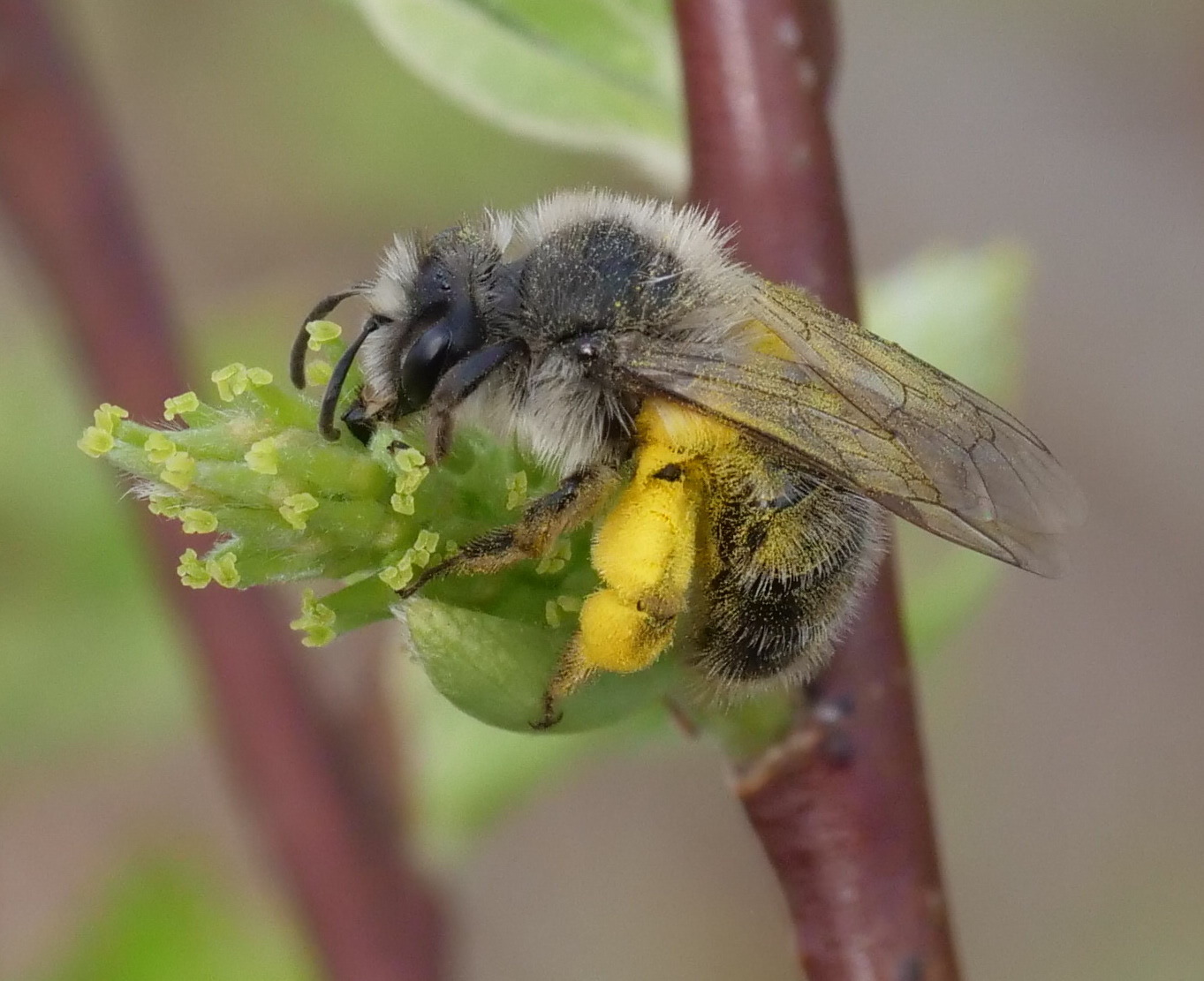Spring has sprung!
Spring is (almost) here! There’s still snow at my house here in VT, but for many folks the signs of spring are popping up quickly. We’re just starting to get a stream of new 2024 observations coming in of early flying pollinators visiting early blooming plants in the Northeast. 91 observations have come in this year already!
Spring is a very valuable time to collect new data for the PIP project. Because there’s many more pollinators in the summer, we don’t have as much data on early plant-pollinator interactions, so this is a great time to contribute. Some of our early flying butterflies and bees are species of conservation concen like the Early Hairstreak. Keep your eyes out for some of the earliest pollinators to emerge this spring in your area by watching your blooming trees and flowers closely and submit your interaction data!
Here are some taxa we’d love more data on:
1) Mining bees (Andrena sp.)
Andrenid bees are some of the earliest and most common bees seen in the spring beginning as early as February in some locations. Be on the lookout for species such as The Spring Beauty Miner (Andrena erigeniae) and Frigid Mining Bee (Andrena frigida). Many Andrenid species have varying degrees of oligolecty (a fancy term for pollen specialist), so knowing where, when, and what flowers they are using in very helpful data.

2) Cellophane Bees (Colletes sp.)
Unequal Cellophane bee (Colletes inaequalis) is the first Colletes bee to emerge in the NE. These early-flying bees can be found in a variety of different habitats, often making nesting locations along trails or in lawns. They are reported to be generalist flower visitors, but we need more than just 59 observations to see just how generalist they are!

3) Early Butterflies
Our early butterflies tend to forage mostly on sap and decaying fruit in the early spring, but they also visit flowers too. Keep an eye out for some of our earliest butterflies, the Mourning Cloak (Nymphalis antiopa, the Eastern Comma (Polygonia comma), and Milbert’s Tortoiseshell (Aglais milberti)all of which overwinter as adults and are among the first to fly in the spring. (We just saw a Milbert’s Tortoiseshell here in VT today!)

Thanks to all your help, we’re up to >35k observations in just one year of effort. Amazing! We’re excited for another year of collecting plant-pollinator interactions with you. If you’re like me, and it’s still pretty cold in your area, you can also help our efforts by assisting with annotating old records. Visit this page for a how-to guide on smart searches to find and annotate existing iNaturalist records with the interaction field.





Comentarios
Happy spring to you too! Yeah, it's been a terrifyingly early spring (just a preview of what climate change is going to do -- I can't imagine) and pansies are already blooming in the flowerpots I left outside over the winter. I will keep my eyes out for pollinators. One of my friends reported seeing a mourning cloak two weeks ago already -- no photo of course.
Añade un comentario